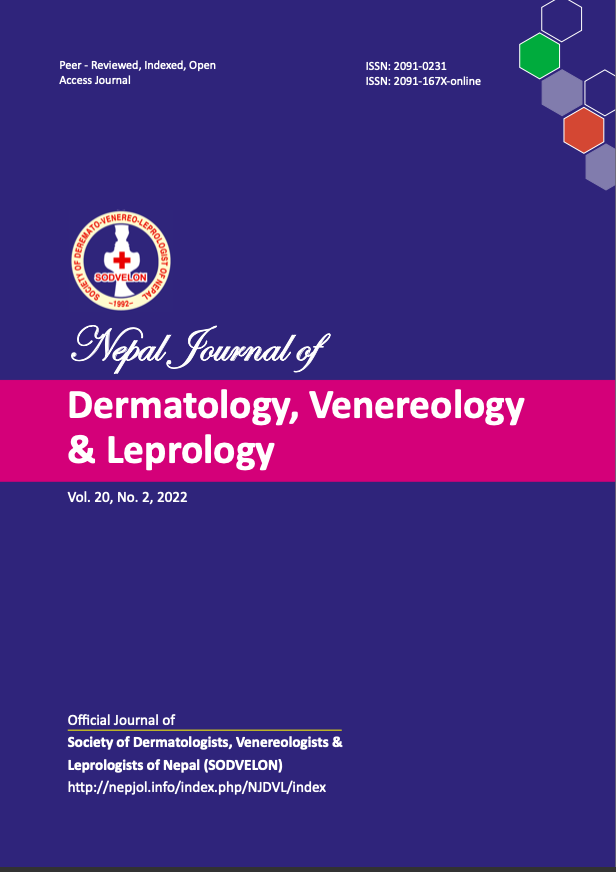Effectivity of Uniform Multidrug Therapy on the Success of Paucibacillary and Multibacillary Leprosy Treatment
DOI:
https://doi.org/10.3126/njdvl.v20i2.44700Keywords:
Leprosy, Multibacillary, Multidrug therapy, PaucibacillaryAbstract
Leprosy is a chronic infectious disease caused by Mycobacterium leprae (M. leprae) that involves the integumentary and peripheral nervous system, causing neuropathy, deformity, and disability. Early detection and appropriate treatment are the ways to break the chain of transmission and prevent disability in leprosy patients. The first line of treatment for leprosy is the standard Multidrug Therapy (MDT) regiment consisting of rifampicin, dapsone, and clofazimine. Standard MDT treatment is given based on the leprosy classification of paucibacillary (PB) and multibacillary (MB). The utilization of the standard MDT regiment has some limitations, particularly where there is a limited supporting test facility, causing difficulty in determining the leprosy classification accurately. An alternative regiment proposed to substitute the standard MDT is the Uniform-MDT (U-MDT). Several studies have been conducted on the use of U-MDT and have produced promising results for the treatment of PB and MB leprosy.
Downloads
Downloads
Published
How to Cite
Issue
Section
License
Copyright (c) 2022 Society of Dermatologists, Venereologists and Leprologists of Nepal

This work is licensed under a Creative Commons Attribution 4.0 International License.
Copyright on any research article is transferred in full to Nepal Journal of Dermatology, Venereology & Leprology upon publication. The copyright transfer includes the right to reproduce and distribute the article in any form of reproduction (printing, electronic media or any other form).




